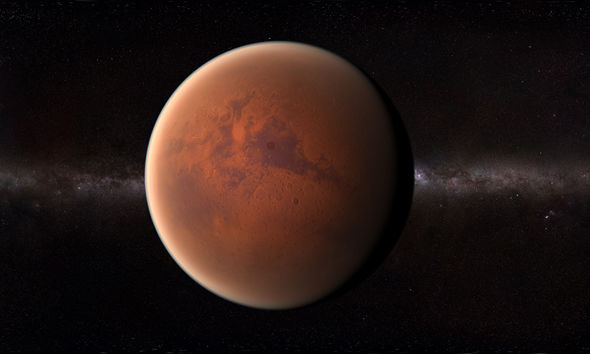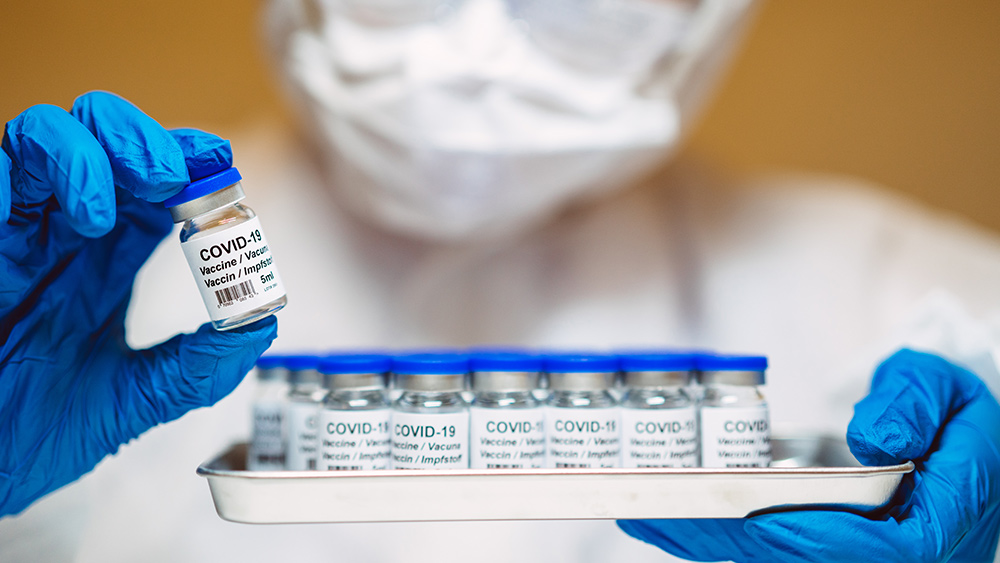 Parler
Parler Gab
Gab
Study findings support radar measurements suggesting presence of water beneath the ice on Mars
The researchers' findings, published on September 29 in the journal Nature Astronomy, agree with previous ice-penetrating radar measurements suggesting a potential area of liquid water beneath the ice. "The combination of the new topographic evidence, our computer model results and the radar data make it much more likely that at least one area of subglacial liquid water exists on Mars today, and that Mars must still be geothermally active in order to keep the water beneath the ice cap liquid," said research head Neil Arnold of Cambridge's Scott Polar Research Institute. The team used a broad range of techniques to analyze data from the Mars Global Surveyor of the National Aeronautics and Space Administration. The satellite focuses on the surface terrain of Mars' south polar ice cap where the radar signal was detected. The study showed 10- to 15-kilometer-long surface undulations comprising a depression and a corresponding raised area, both of which deviate from the surrounding ice surface by several meters. This is similar in scale to undulations over subglacial lakes on Earth. Scientists then tested if the undulations on the ice's surface could be explained by liquid water at the bed. They then ran computer simulations of ice flow that were adapted to the specific conditions of Mars. Next, they inserted a patch of reduced bed friction in the simulated ice sheet bed where water, if present, would allow the ice to slide and speed up. Their experiments generated undulations on the simulated ice surface that are similar in size and shape to those the team observed on the real ice cap surface. The similarity between the undulations produced by computer model and the actual spacecraft observations suggest that there's an accumulation of liquid water underneath Mars' south polar ice cap. "The quality of data coming back from Mars, from orbital satellites as well as from the landers, is such that we can use it to answer really difficult questions about conditions on and even under the planet’s surface, using the same techniques we also use on Earth. It's exciting to use these techniques to find out things about planets other than our own," said Arnold. Follow Space.news for more stories like this. Watch this video about the water discovery that proves there is life on Mars. This video is from the Health Ranger Report channel on Brighteon.com.More related stories:
Study shows gullies on Mars’ southern hemisphere. Glaciers on Mars could help astronauts survive on the planet. Astronomers may have discovered multiple underground lakes on Mars. Sources include: DailyMail.co.uk Nature.com Brighteon.comSimple nasal wash reduces risk of covid hospitalization by more than 8x
By Ethan Huff // Share
New study: A simple nasal wash reduces the risk of being hospitalized for COVID by >8X
By News Editors // Share
Pfizer DID NOT test its COVID-19 vaccine for possible effects on male fertility
By Arsenio Toledo // Share
Germans rush to buy electric heaters as natural gas shortage looms
By Arsenio Toledo // Share
Researchers share 3 key steps to ensure optimal brain health
By Mary Villareal // Share
Governments continue to obscure COVID-19 vaccine data amid rising concerns over excess deaths
By patricklewis // Share
Tech giant Microsoft backs EXTINCTION with its support of carbon capture programs
By ramontomeydw // Share
Germany to resume arms exports to Israel despite repeated ceasefire violations
By isabelle // Share









